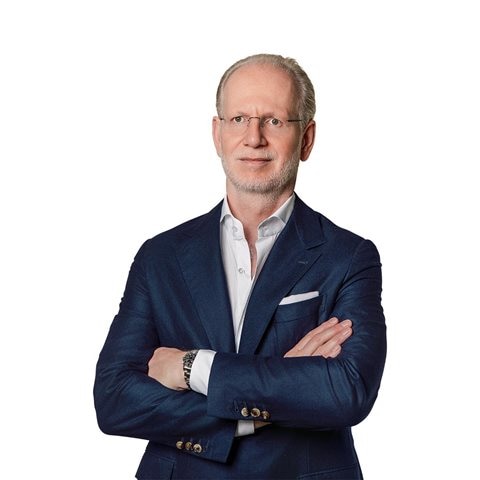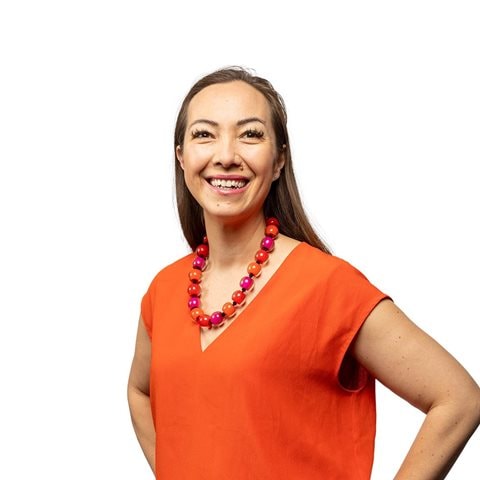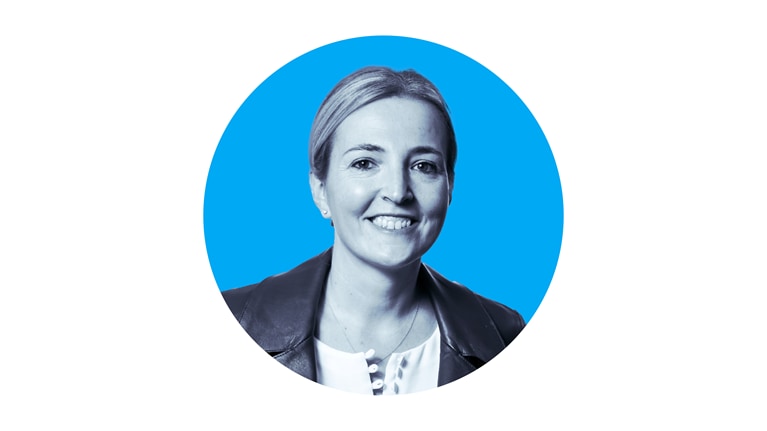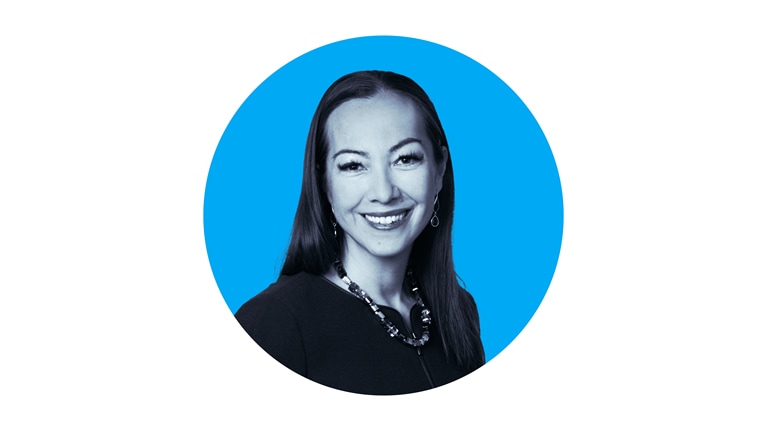As companies rebound from the COVID-19 pandemic, women in the workforce have reported alarmingly high rates of burnout due to extra duties both at work and at home and a lack of support. While the insurance industry has made progress, there are ample opportunities to level the playing field.
In this episode of McKinsey on Insurance, Kweilin Ellingrud speaks with Stephan Binder, Violet Chung, and Pia Schlüter about the findings of McKinsey’s latest Women in the Workplace report, the progress they’ve seen for women in financial services over the years, and their outlooks on the future of the insurance industry.
An edited transcript of their conversation follows. For more episodes of McKinsey on Insurance, our podcast about the trends, disruptions, and strategies that are reshaping the industry, subscribe to the series on Apple Podcasts, Google Podcasts, or Spotify.
Kweilin Ellingrud: McKinsey’s latest Women in the Workplace report paints an alarming picture of the state of women in North America. Two years into COVID-19, we’re seeing many more women leave the workforce compared with men. Women in corporate America are also more burned out than ever before. Despite this, we see women leaders stepping up significantly to support employee well-being, diversity, and inclusion—but that work, unfortunately, isn’t recognized as broadly as we need it to be.
Pia, what are you seeing in terms of diversity developments in Europe?
Pia Schlüter: We actually see very similar developments as you are describing for North America, both in terms of women having higher burnout rates and in terms of women doing even more to support employee well-being and carrying a double load at home and at work.
Kweilin Ellingrud: Violet, what do you see in Asia?
Violet Chung: There’s a term called “double shift,” meaning you do your work at work, and then at home, you are expected to take care of family. It’s a societal expectation in many Asian communities—and it’s affecting a lot of women, especially in COVID-19 times. We found that 42 percent of women say they’re burned out. Many women we interviewed also said that they are expected to support other colleagues more than their male counterparts are. There’s quite a bit of stress and imbalance.
Kweilin Ellingrud: By comparison, what we’re seeing in insurance in North America is promising. At every level of the talent pipeline, insurance is more diverse than the average of other industries. Overall, it is between seven and 14 percentage points more diverse compared to all other industries, and the entry level is two-thirds women. Incredible, right? That diversity reduces as you look at more senior positions in the talent pipeline. Women of color are deeply underrepresented. We need to fix the talent pipeline not only in terms of gender diversity but also in terms of racial diversity, at least in North America.
Stephan, as you look across the insurance industry, have we made enough progress with diversity and inclusion? What else do we need to do?
Stephan Binder: In Europe, diversity in insurance has been getting better, but the starting point was low. And that’s a challenge for insurance companies, because they lack the breadth of perspective and experience that women bring, especially in senior positions.
Insurance companies are becoming more digital, becoming more customer oriented, and facing a lot more challenges in more volatile environments. So this breadth of experience and diversity of perspective is becoming more relevant, and the awareness of the importance of that has increased dramatically over the past few years. But acknowledging the importance is not going to change anything. It’s hard work day to day to make this change happen.
Over the past two years, companies have confronted different work models and have had to provide more flexibility using more digital channels and internal communication. I hope this will unlock more progress.
The role of mentorship and sponsorship
Kweilin Ellingrud: We know that mentorship and sponsorship are important elements of success in increasing diversity. Our research shows that female leaders in North America are supporting their teams between six and 11 percentage points more than the average male manager, providing emotional support, managing overall well-being, and ensuring that their team members have manageable workloads.
Pia, across Europe, do you think there’s enough sponsorship within insurance?
Pia Schlüter: Mentorship and sponsorship are crucial to reach diversity goals. But we also need more long-term strategies. We need to ensure that the right conditions are in place so all employees can develop to their full potential and feel valued.
A few years ago, McKinsey published an analysis stating that the companies that are especially successful are those that offer their employees the freedom to try new methods and learn from mistakes and those that are clearly committed to diversity.
Want to subscribe to the McKinsey on Insurance podcast?
Kweilin Ellingrud: I hear it said that women and people of color are often overmentored but undersponsored. And so that shift from mentorship—“I’ll give you advice. I’ll tell you how I went through my journey”—to sponsorship—“I’m going to create opportunities, risk my political capital, and bet on my relationships to create opportunities that didn’t exist before”—that’s what we want to see more of.
I’ve seen some insurance carriers make the bold move across senior leadership teams to ask people, “Who do you mentor who doesn’t look like you?” That pushes leaders to bridge across differences, meet new people, and get outside their comfort zones. If we can hold each other accountable for who we mentor or sponsor, that’s when we’ll start to make a difference.
Overcoming bias
Violet Chung: I completely agree, Kweilin. I think sponsorship is very important. But I think even more important is changing the mindset at a corporate level. As a woman, I hate when people consider this to be just a woman’s initiative. It actually makes absolute business sense. In fact, in our past research, we found that companies with higher diversity, especially with more women, have 20 to 25 percent more ROI. So I think that should be the first conversation companies recognize.
In our past research, we found that companies with higher diversity, especially with more women, have 20 to 25 percent more ROI.
And when it comes to creating an inclusive environment, what Pia said is extremely relevant. This is like any change management: it needs to be a top-down initiative.
One more thing I would add is the importance of tackling unconscious bias. That means seeing where the engine is broken down—taking a very transparent approach to understand which part of the funnel is missing and needs the most fixing in terms of both hiring and retention.
Kweilin Ellingrud: Unconscious bias is such a critical element. Our research shows that when you give a group of people identical résumés with all of the same bullet points, the same font size, and same font type but one résumé says John Doe or a typical male name and the other says Jane Doe or a typical female name, both men and women in the group ascribe greater leadership and higher future potential to the imaginary John Doe. And that’s both conscious and unconscious bias that has been societally ingrained. That doesn’t just affect women and men at the entry level—that affects people across the talent pipeline.
And in the United States, if on that otherwise exactly identical résumé for Jane Doe you put “active PTA member” or another signal that she is an involved parent, she’s almost 87 percent less likely to get the job. We have societally ingrained notions that she is going to prioritize her family instead of her job and therefore will be a less valuable employee.
We have societally ingrained notions that [a woman] is going to prioritize her family instead of her job and therefore will be a less valuable employee.
So all of these unconscious biases and—Violet, as you were describing—conscious biases are playing out. We can study those examples at the front end of the funnel, but what happens when we’re talking about promotions?
Stephan earlier was talking about granting more flexibility. Well, the flip side of the flexibility is—if women or others with care responsibilities are coming into the office less in a post-COVID-19 hybrid environment, we’re less visible, we’re less top of mind when people are thinking about step-up opportunities or big roles. Over time, we will see that result in fewer advancement opportunities. Another repercussion of the flexibility is: when we’re in the office, we’ve got to make it count. We’ve got to connect with our colleagues. We’ve got to deepen those relationships. We’ve got to make sure that our sponsorship network is just as strong as our peers’. And that is the gap that we need to bridge in this new flexible hybrid environment.
Diversifying leadership
Violet Chung: One of the best compliments I’ve gotten was that, as a female leader in board meetings or executive meetings, I tend to feel less of a need to fill the room. I step back a bit more and observe the room and see what could be a win–win for everyone.
As women leaders, we all need to celebrate the fact that we add quite a bit of inspiration to the room because of the diversity and the energy that we bring. Since that feedback, I have more confidence walking into a room in multiple different situations and when I’m one of the few females. It’s refreshing to get that pat on the back and give that inspiration to myself and to the peers who work with me.
Kweilin Ellingrud: Violet, I love that example. You can either think about those situations as challenging, or you can embrace the fact that you’re going to stand out as a woman in that environment and prepare what you want to say, how you want to be perceived, and how you want to add to the conversation.
Stephan Binder: One other way to think about it is: if you’re a CEO in the insurance industry today and you want to change something, it’s actually quite hard to do because you probably don’t have enough women at a senior-enough level in your company to be able to promote them quickly. Insurance companies, as we know, are in need of more talent from other industries, be it from asset management or banking or consumer goods or digital. And there are many other industries that have more women leaders. So companies can diversify their leadership groups by bringing in more talent with different perspectives while also bringing in more women.
Companies can diversify their leadership groups by bringing in more talent with different perspectives while also bringing in more women.
Pia Schlüter: Stephan, to your point, I also see that some insurers manage to diversify their leadership much better than others. If you look at Europe, the number of female top managers in insurance is still superlow. But then you have other insurers that manage to have 30 percent of their board or top management being female. Insurers can look at what other insurers are doing to sponsor women or develop their female talent.
Insurers can look at what other insurers are doing to sponsor women or develop their female talent.
Tactics for making real progress on diversity
Kweilin Ellingrud: It’s important to keep in mind that half of carriers don’t really make any progress on gender diversity. Comparing where they start to where they end up five years later, most companies are just trying to replace the diversity that they lose over time. Only the top half of companies are making progress. And only a very small percentage—about 5 percent on the gender diversity side and 15 percent on the racial diversity side—are making significant progress. So the question for us is: how do carriers get into that 5 to 15 percent top decile, if you will, of performance on diversity?
An action that leading companies have taken is setting a clear and aspirational goal—not a quota but a target that the entire company wants to get to—and then cascading that accountability across each line of business and function. Your starting point in IT is going to be very different than in HR, but wherever you’re starting, how do you systematically get to a better spot and share those best practices across the organization?
Another action we’ve seen with leading North American companies is setting those goals, both for gender diversity and racial diversity, and then tying them either to personal performance reviews or, in some cases, to senior-leadership compensation. You can imagine when you put your money where your mouth is, numbers start to move.
What other actions have you seen that leading carriers have taken?
Pia Schlüter: It starts from the top. It’s top management paying attention and making it their personal objective to sponsor women. And also communicating it extensively, externally—making an external commitment and following up on their progress.
Creating balance beyond the workplace
Kweilin Ellingrud: Violet, you mentioned this double shift, the challenge of managing two careers: at work and home. One thing we see in North America is that women are much more likely to be part of a dual-career couple—80 percent of women across Fortune 500 companies in the US are part of a dual-career couple, compared with about 56 percent of men. And more-senior women are more likely to be part of a dual-career couple, while more-senior men are less likely to be part of a dual-career couple. When you think about the balance of two careers, potentially intense careers, and then the balance at home, picking a partner who more equally shares those responsibilities on the home front is actually one of the most critical things for personal balance and advancement in your career.
We see in the United States that women do about twice as much unpaid care work as men. Around the world, it’s about three to one. In some countries, like India, it’s ten to one. Women literally do ten times as much shopping, cooking, cleaning, taking care of kids, taking care of parents, and taking care of in-laws as men. As we think about balance outside the workplace, how do we shrink that ratio overall? A lot of the shifts in automation because of COVID-19 have helped a bit. But then whatever remains, how do we share those tasks much more equally across a household so that we can all participate fully in the workforce?
Violet Chung: One good thing for dual-salary parents is to find people like them and share experiences and services that are helpful in their surrounding areas. Increasingly, companies in Asia are creating such networks of support and providing that service. That’s a function of HR: ensuring folks who are young parents with young families, or families with elders that require more attention, have those group facilities.
We’re also seeing more insurers investing in some of these facilities for their employees. Innovators in the region are investing in schools or even hospital networks so their employees have a preferential entrance or preferential care.
Sourcing diverse talent
Kweilin Ellingrud: Stephan, you mentioned a strategy of going outside of insurance to borrow diversity, if you will. The insurance industry is very well positioned to do that, particularly because its strong purpose to protect families and be there in the moment of need can be incredibly attractive to women and diverse leaders. So hopefully we can use the purpose, the good that insurance does for society, to bring more diverse leaders into insurance.
Stephan Binder: I completely agree. And if you take a slightly broader lens, there’s terrific leadership by many women outside of the corporate world, in the education sector or at NGOs [nongovernmental organizations]. These roles require incredible talents. And for an insurance company, as you said, it’s easier than for some other industries to build these bridges. I also very much agree with Violet. We’re not just doing this to try to be good—it makes business sense. Companies are getting more resilient with more of a breadth of perspectives.
And for the insurers that want to get customer oriented, especially on the retail front, understanding the customer is key. But it’s not a birthright for many insurance companies. So you need the diversity because these customers are diverse.
Hope for the future
Stephan Binder: Something gives me hope. If I look at the next generation, and the one after that, of young people who are entering the professional world or have entered in recent years, there is much more of a desire for flexibility, both for men and women. A lot more young people don’t want a full-time job with one corporation all the time. And if everyone has a job that is more flexible, then it’s much easier to find a balance, especially if you want to have a family. I think the discussion should really be, as you have said: what can we do to accelerate?
Kweilin Ellingrud: I think we are moving in the right direction. We all agree there’s still room for improvement across insurance and across the globe, but we’ve come a long way and there’s a lot to celebrate.
Thank you all for this lively conversation today and, to the audience, thank you for listening. Remember to subscribe to McKinsey on Insurance podcasts wherever you get your podcasts.






